Don't limit yourself to the same old greens for sandwiches and wraps. Toss in some unique watercress to shake it up, or try mixing it up with a spring bunch or mesclun to stretch your sandwich greens dollar.
Choosing the right lettuce can elevate your sandwich game, from crisp and refreshing to tender and buttery. Lettuce sandwiches are increasing in popularity, as well. Adding lettuce to your sandwich not only contributes unique flavor and texture, but also provides a nutritional boost no matter which sandwich lettuce you choose.
In this article, we'll take a look at the benefits of using lettuce in sandwiches, how to pick & store the best lettuces, and why or when to use each one. We also cover the healthiest sandwich lettuces and the best sandwich lettuces for each type of sub.
Medical Disclaimer: as with everything on this site, this article is provided for information only. I strongly urge you to speak with your doctor or a licensed medical professional in order to assess whether or not you have histamine issues, and/or which foods cause a histamine release for you personally. Every body is different, and some people will tolerate different foods than you do. Please keep comments respectful.
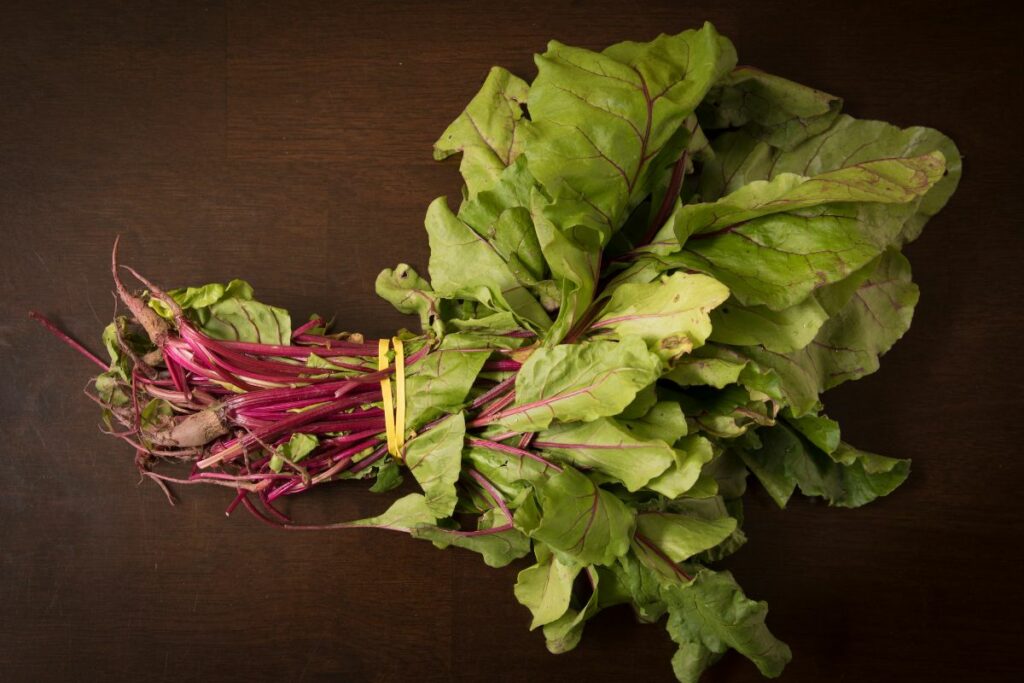
Jump to:
✨ Benefits of Lettuce on Sandwiches
While lettuce’s geographic origin isn't clear, it’s known to be native to the eastern Mediterranean, the Middle East, and Western Asia. The cultivation of wild lettuce can be traced back to the Caucasus region around 6,000 years ago.
Grown for the oil contained in its seeds, the Greeks and Romans valued lettuce as a vegetable and a home remedy. Columbus is actually credited with introducing lettuce to the Caribbean.
Lettuce is a member of the plant species, Lactuca sativa, which is cultivated in four botanical varieties: celtuce, crisphead, butterhead, and loose-leaf. Each variety has different shapes and nutritional value.
- Celtuce, also called celery lettuce, stem lettuce, or asparagus lettuce, is known for its narrow leaves and thick stems.
- Crisphead Lettuces, such as icebergs, grow with leaves forming a dense rosette, eventually forming tightly-clasped round heads that resemble cabbages.
- Leaf Lettuces come in three types - red, green, and oak. They are distinguished by broad, succulent single-stalk leaves that may be curled, finely cut, or smooth-edged. This botanical variety is more perishable than head lettuces, which is why they tend to be sold pre-washed and pre-cut.
- Romaine Lettuce or cos lettuce has long, slender heads. A firm rib runs down the center of each leaf, with smooth leaves that grow a tall, sturdy head of loose leaves.
Lettuce is an amazing nutrient-dense leafy green, despite that fact that it contains about 95% water. This type of salad green is generally known to be amazingly low in calories while still a rich source of vitamins and minerals such as B vitamins, Vitamin A, C, and K, folate, magnesium, manganese, phosphorus, potassium, zinc, and iron.
It’s also high in antioxidants and other bioactive compounds— which help protect against cellular damage caused by free radicals— and have antibacterial and anti-inflammatory properties.
However some lettuce varieties are more nutrient-dense than others. According to the data shown in this study, the vitamin A content in iceberg lettuces is significantly lower than in romaine lettuces while folic acid, potassium, and iron are more substantial in romaine, head, and leaf lettuces.
Just remember, even if you eat large quantities of lettuce, it doesn't take the place of other nutritious foods. The US Department of Health and Human Services suggests eating at least 2.5 cups of vegetables per day, of which lettuce is a nutritional addition.
Eating more lettuce, especially in place of foods like bread, may provide significant nutrition while offsetting other calorie-dense foods. So when you've overindulged a bit the previous night, having a salad for lunch is a good choice.
When you pick lettuce that’s young and tender, it will have a denser nutrient profile and make beautiful salads & sandwich fillings.
Iceberg lettuce is the best lettuce for sandwiches because it withstands pressure and provides a satisfying crunch for added texture and lightness. However, it has a lower nutritive content than other lettuce varieties.
Darker leaves tend to have more dense nutrition, which is my so many people opt for romaine lettuce. It’s the healthiest lettuce among all the varieties discussed below, with the possible exception of microgreens. It’s crisp and durable like iceberg lettuce, but larger, so it’s also an ideal lettuce for sandwiches.
Most raw greens are also high in oxalates, so sticking to a diet of primarily salad greens may not be 100% beneficial if you have issues with histamine or calcium. Excessive lettuce consumption can have a variety of negative consequences, according to this report. This is because the oxalates found in leafy greens can be tough on your kidneys.
Lettuce is also high in toxic nitrates, that can lead to stomach cancer or blood disorders, if they make up too large a proportion of your diet. The good news is, there are low oxalate salad greens that you can indulge in in higher amounts.
Arugula, Romaine lettuce, Iceberg lettuce, and Watercress, all have 0 mg oxalates per cup.
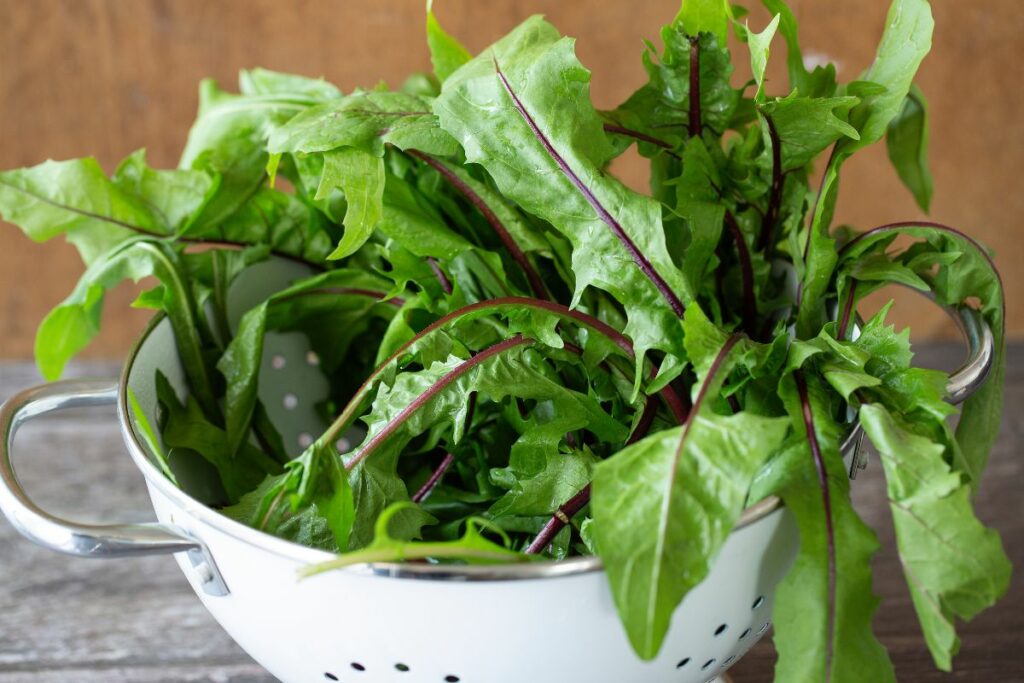
🔍 Tips to Find The Best Sandwich Lettuce
When buying lettuce, choose high-quality lettuces, such as organic and locally grown ones, and avoid greens that may have been treated with pesticides. Shop for lettuce at the grocery store or your local farmer’s market, with a preference for organic-certified produce.
Set your sights on the lettuces with vibrant colors and fresh-looking leaves. Don’t go for bunches with signs of wilting, mushy and brownish sections, or lots of dirt. Here are some shopping tips for finding high-quality lettuce.
Buy Fresh in Small Quantities and Frequently
Lettuces that have been only recently picked will prove to be the highest quality, providing freshness, excellent nutritive value, and amazing taste. Instead of bagged salads, choose to buy a head or whole lettuce instead. Leaves that remain on the plant will last longer, and wilted leaves can be removed; whereas if buying a bag, you’ll likely have to discard more wilted leaves.
A bit of sand and soil is better than wilting and dried leaves; you can always wash those off. Similar to a friendly bug indicating that your greens are pesticide-free, when there’s a bit of dirt, it tends to indicate less mechanical intervention. If you can, try smelling the lettuce stems. They should have a slightly sweet, rather than bitter, aroma.
You can also opt for younger produce, which is often tastier. Avoid overly large lettuce heads, as their leaves may have become tough and fibrous.
Choose the Prettiest of Them All
When it comes to buying produce, it’s perfectly alright to choose the prettiest and most beautiful from the lot. Leaf lettuce of high quality is vibrantly colored and free of yellowing, wilting, or brown spots.
Choose lettuce that is fresh and crisp, with springy, tight leaves, or head lettuces that are dense and heavy. Leaf lettuce with yellow leaves or cracked ribs should be avoided.
The outer leaves of a lettuce head are the most nutritious and flavorful, but they’re also the most vulnerable to damage. Choose heads of lettuce with dark green, intact outer leaves over those with dark or slimy spots.
Avoid and reject lettuce that appears wilted, spotted, slimy, moldy, has new shoots growing, or is decaying.

It’s OK to Be “Label” Conscious When it Comes to Lettuce
If you're not sure if your lettuce is organic, when buying produce, it’s a must to look at the label. To guarantee that your produce has been grown under the strictest standards, look for a US Department of Agriculture certification label (USDA).
Love and Buy Local Greens
Purchasing from your local farmer's market is the best and most sustainable option. There's a good chance that a head of lettuce picked recently was also picked closer to you in terms of distance. The difference in taste is very noticeable.
There are a handful of specialty shops online that can deliver high-quality produce to your door. Here are some options that offer a good variety:
Lettuce is usually cooled or kept in a cool place as soon as possible after harvesting, so make sure to do the same once you get it home from the market.
The shelf life of the leaves will also be extended by thoroughly drying them before putting them in the fridge. Store lettuce in plastic bags or the crisper section of the refrigerator. The shelf life of lettuce varies, but under ideal storage conditions of 32-35°F, it will generally keep for 7-10 days.
All types of lettuce should have a solid, compact head and crisp leaves. Avoid limp or dull lettuce, as well as any discolored or yellowed areas. Due to the perishability of salad greens, they should typically be consumed within one week of purchase.
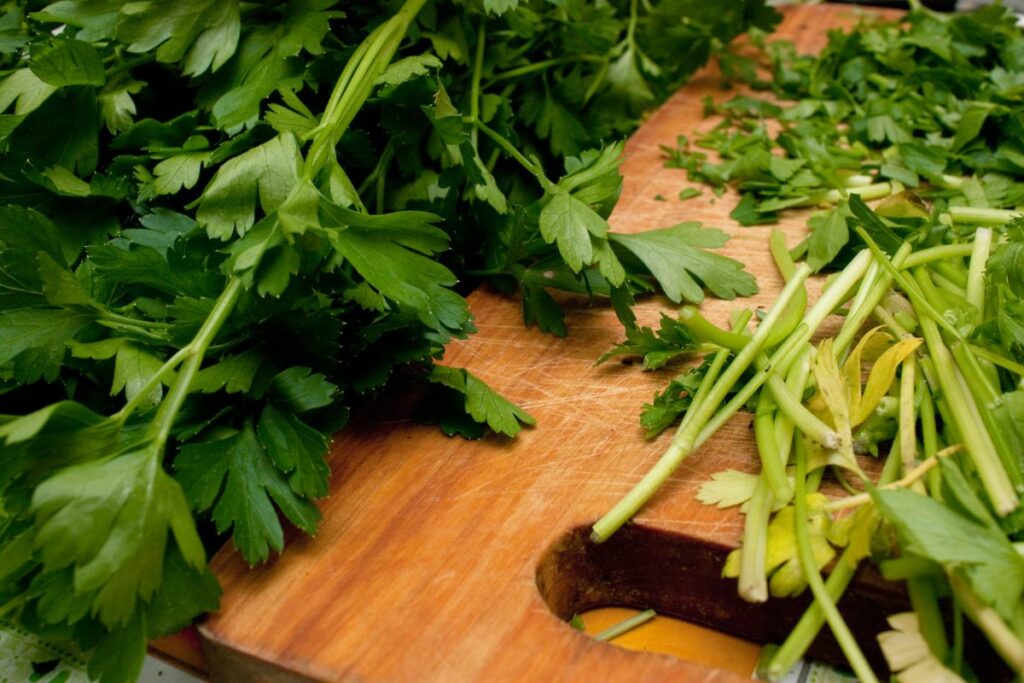
🥗 How to Store Salad Greens
Lettuce varieties may be stored differently. If the lettuce comes with a root, keep it wet until you’re ready to use it. Refrigerate it in its original packaging, or wrap it in paper towels and place it in a plastic bag.
Iceberg lettuce is frequently sold in plastic wrap, which should be removed before storage. Crisphead and romaine lettuce can be stored for up to 1 week.
Some lettuce comes in a container with detached leaves. This method keeps it in good condition when refrigerated for about 5 days. Refrigerate them with the head still attached in the crisper drawer.
Wash lettuce only when you're ready to use it. All fresh produce, especially leafy greens and lettuce, should be properly washed and dried prior to consumption. Soil bacteria can contaminate fruits and vegetables and cause foodborne illness if you don't wash them prior to eating.
Salad dressing also adheres better to dry greens, and extra water dilutes the dressing's flavor.
More delicate butterhead and loose-leaf lettuces can be stored for up to 5 days with the added step of pre-washing, cleaning, and drying them properly. Store loose salad greens in a plastic bag wrapped in a paper towel in the crisper in the refrigerator for up to 3 days.
Store fresh lettuce away from ethylene-emitting produce such as bananas, apples, pears, plums, and grapes. These fruits release ethylene, a natural gas that is harmless to consume but will cause lettuce to wilt faster. Due to the lettuce's high water content, it’s best to avoid freezing it to extend its shelf life.
Wash and thoroughly dry greens right before using them in your sandwiches. Here’s how:
- Separate the leaves of head lettuces and loose-leaf lettuces.
- Run the leaves through cold water. For more difficult-to-clean leaves, use a salad spinner.
- Fill a bowl with cold water to within 1 inch of the top, then fill the basket two-thirds full of greens and submerge them in the water.
- Dip the whole head of lettuce in a large bowl of water and it will help loosen any sand and dirt clinging to the leaves.
- Soak the greens for at least 5 minutes.
- Repeat if your greens are especially dirty or sandy.
- Remove the basket, discard the water, and replace it in the spinner.
- Cover and spin the greens until completely dry. Using a kitchen towel, blot off any remaining water.
Lastly, always wash your hands before handling salad greens, and ensure that you are working with clean kitchen equipment.
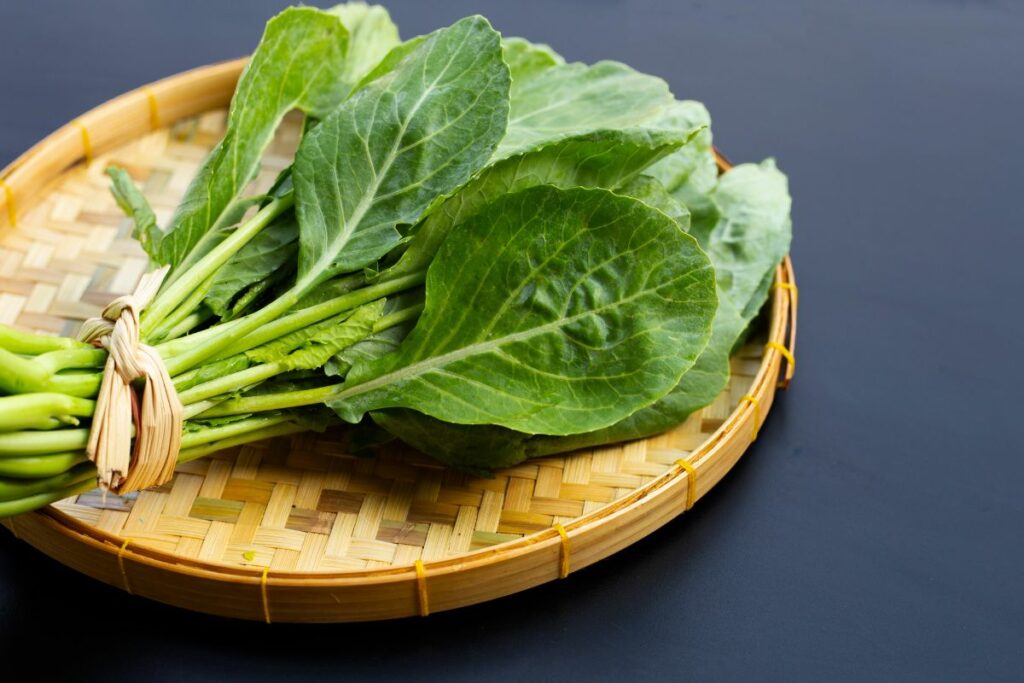
🥪 Best Sandwich Lettuces
Lettuce is often used to add a layer of flavor and crisp texture to sandwiches. The sturdier varieties can also hold a myriad of fillings as a “lettuce sandwich” or lettuce wrap. Lastly, it lends a nice aesthetic to your sandwiches, whether to add color or as a garnish.
To add more texture and flavor to your sandwiches, toss together a mixture of sandwich lettuces. Different types add various flavors i.e. iceberg lettuce tends to be sweet, arugula is peppery, and radicchio is more bitter than most other greens.
While you can pile on a cup of lettuce in your sandwich as it will overpower the other ingredients, do serve some greens on the side to increase your lettuce intake. In this part, we'll look at some of the best lettuce types for sandwiches, as well as why and when to use them.
Iceberg Lettuce

Iceberg lettuce is the traditional sandwich lettuce. It is the most common lettuce variety, distinguished by its crisp and refreshing texture as well as its mild flavor.
This crunchy lettuce, developed in 1894 for its ability to travel long distances, is the original base for chopped and wedge salads. It has been a popular choice for many people, whether served as a lettuce sandwich or used in a sandwich. Because iceberg lettuce is high in water, blot it dry before adding it to your burger.
Iceberg lettuce has a sweet, subtly bitter flavor, but its crunch is superior to any other lettuce on the market. It does, however, have the lowest nutritional value, containing some vitamin C, potassium, folate, and a water content of 96 percent.
Its popularity began to dwindle for a variety of reasons, including the discovery that it is not as healthy as other, newer, and more modern lettuce varieties. It's not the healthiest lettuce, but it’s not bad for you, either.
Romaine Lettuce
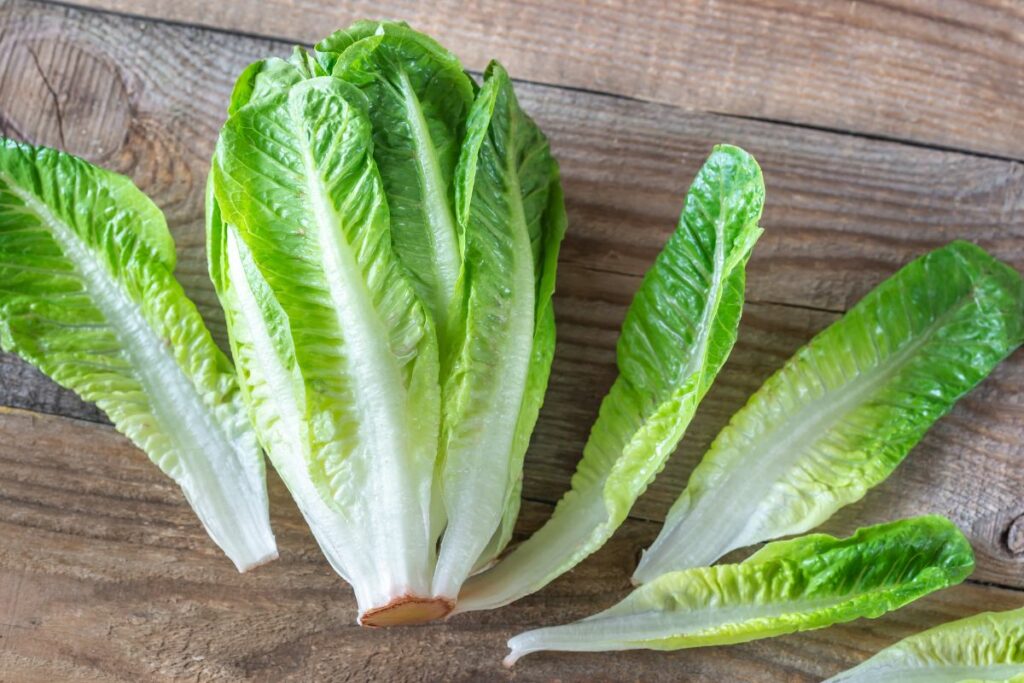
Romaine or Cos is an old-fashioned winter lettuce that is available in both full and smaller 'baby' sizes. It has coarse leaves that are tightly wrapped to form an elongated head. Crunchy and sharp in flavor, romaine is savory, yet with a neutral taste.
Because of its crisp texture and slightly bitter flavor, romaine lettuce is another excellent lettuce for sandwiches. Crisp, elongated leaves of the romaine are the main ingredient in classic Caesar salad, though it's also great for wrapping around sandwiches.
Despite the fact that romaine lettuce contains nearly 95% water, the amounts of fiber, vitamins, and minerals are higher than in most other salad greens. It’s low in fiber but contains more folate, potassium, magnesium, phosphorus, calcium, vitamin C, beta carotene, and lutein than either red leaf, green leaf, butterhead (Boston and bib types), and iceberg.
It is also low in calories, sugar, and carbohydrates. Romaine lettuce has the most health benefits of any type, so choose these salad greens for your sandwiches if you want to make better dietary choices. Don’t forget to give them a good wash before enjoying it.
Butter Lettuce (Butterhead)

Butter lettuce is a variety of green lettuce that has a delicate texture reminiscent of the creaminess of butter. It has a mild, sweet flavor and is often sold as a small head with the roots still attached to keep it from wilting, or in boxes of separate leaves.
These beautiful rosette-like heads have soft leaves, making them a great choice for sandwiches that need to be eaten by hand. Butterhead lettuce is an excellent choice for sandwiches that require more tenderness from their sandwich lettuce. It comes in two varieties: Boston and Bibb lettuce.
- Bibb Lettuce is the more common of the two types. It has a small head and bright green leaves. Its size makes it ideal for use as lettuce wrap cups. If you see butter lettuce in the grocery store, that’s likely Bibb.
- Boston lettuce has a larger head than Bibb lettuce, as well as soft, loose leaves. This variety is a little more difficult to come by.
Butter lettuce has few calories, no fat, no cholesterol, and no sodium. It contains calcium, magnesium, phosphorus, folate, and vitamin K, as well as vitamin A, beta-carotene, lutein, and potassium.
Check out our tips on picking out the best sandwich lettuce above. Butter lettuce lasts 3 to 5 days refrigerated, but be sure to wash and dry the leaves prior to serving. As always, a salad spinner is best for quick washing and drying.
Arugula

Arugula is one of my absolute favorite greens! Ever since I discovered this spicy, peppery green, it’s managed to sneak its way into our sandwiches in the way of a garnish, salad green (in a side salad), or filling.
It’s more closely related to salad greens than a lettuce variety, but this fast-growing salad green is found in most mesclun mixes. It will keep in the fridge for more than a week, and stay nice and fresh until it starts to yellow.
Baby arugula has a milder flavor, whereas mature arugula has a more intensely spicy flavor. Its leaves are small and delicate, making it an excellent choice for sandwiches that require a little extra kick, though it will not stand up to heavier sauces.
Sandwiches benefit from the bitter green with a peppery bite. Arugula is the ideal "green" to add to an antipasto sandwich. It has a lower overall nutritional value than other leafy greens, but it contains more calcium and fiber. Arugula is rich in cancer-fighting properties. It contains chlorophyll, which can help to prevent liver cancer.
It's also full of antioxidants, which can protect against or reverse damage to your cells. Glucosinolates give arugula its bitter taste and strong scent, but are also responsible for protecting you against certain cancers, including breast, prostate, lung, and colon cancers.
Green Leaf Lettuce
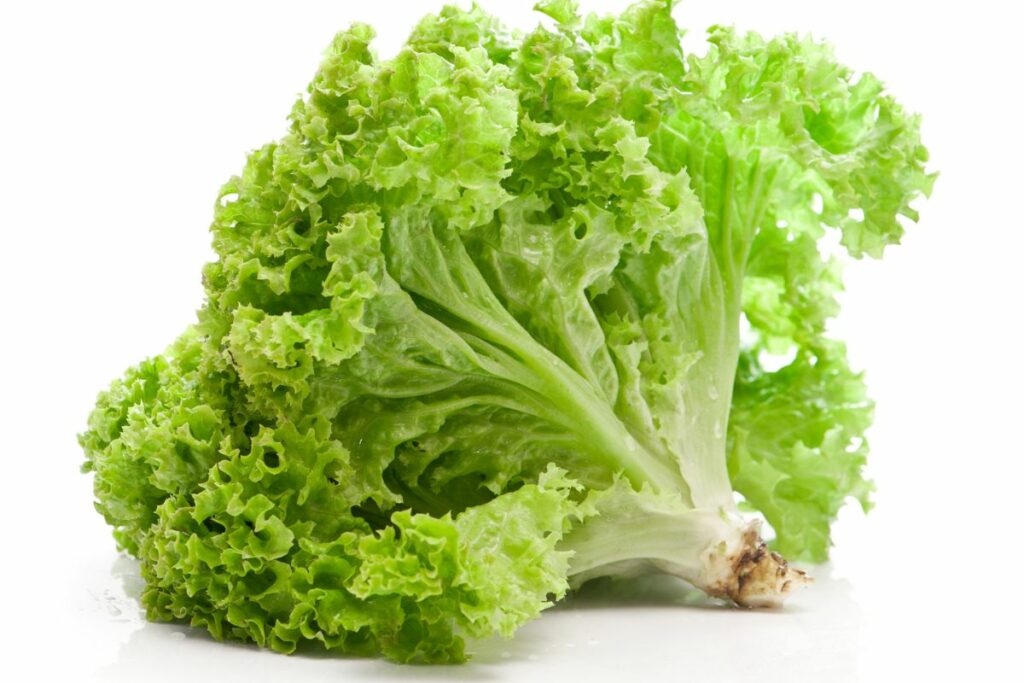
Green leaf lettuce has medium to large-sized leaves that stem from a narrow base. The tender, smooth, and broad leaves fan out in all directions, with lots of curls and frills along the edges, which are dark to bright green.
The leaves also have a mildly sweet or semi-bitter flavor, where bitterness is more common in mature greens than in young greens. This mild-tasting lettuce with crisp leaves is perfect for layering in sandwiches.
It will undoubtedly provide a nutritious boost with its plethora of vitamins and minerals. The greener it is, the more nutrients a leaf provides.. It's high in vitamin A, which promotes healthy eyes and skin, and contains fiber, iron, vitamins C and K, and some B vitamins.
It’s available year-round and can easily be found in most grocery stores or farmer's markets. When choosing, avoid any discolored lettuces right away. Instead opt for bright, crisp leaves. Remove the core of your green leaf lettuce, then rinse it under cold water to prepare it for your sandwich.
Red Leaf Lettuce
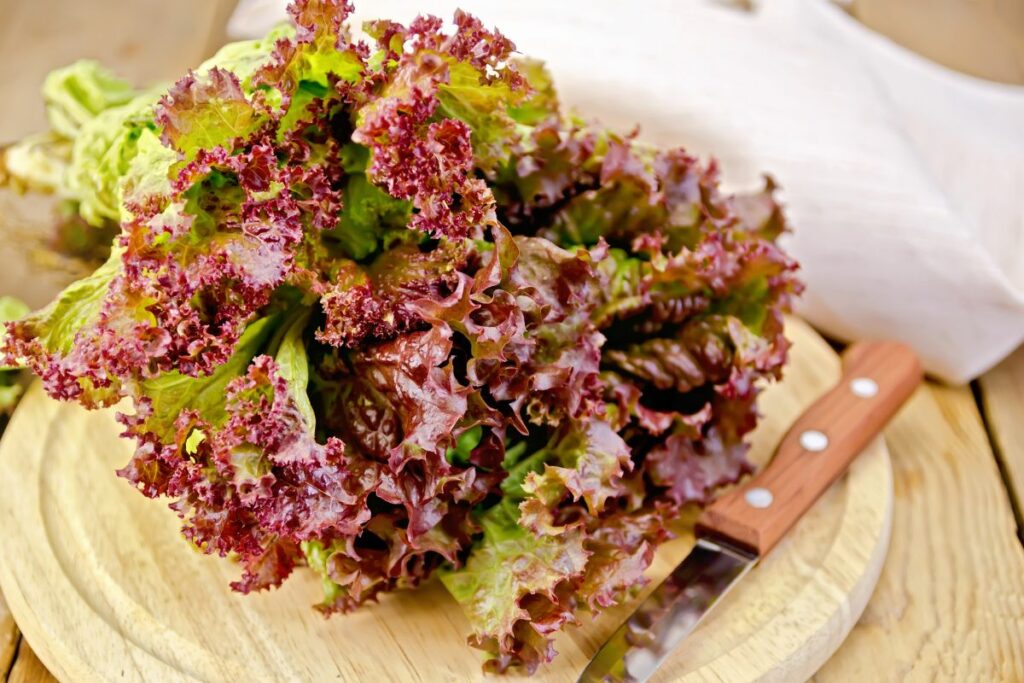
Red leaf lettuce is a leafy green in the daisy family. This loose-leaf lettuce's red-tipped leaves are a variation of green-leaf lettuce, but the flavor is slightly sweeter and nuttier, and the leaves are softer than those of green leaf lettuce.
Red leaf lettuce works best in wraps or as a sandwich layer due to its vibrant color. The leaves can be sliced or torn and used as a crunchy component in burgers or sandwiches. Plus, when wrapped in paper towels and stored in a sealed container in the refrigerator, the leaves will keep for up to ten days.
Red leaf lettuce is also high in nutrients and good for the body. Like other lettuce varieties, it contains antioxidants and is a rich source of vitamins A, C, and K. It contains a fair amount of anthocyanins, a flavonoid that gives it its red color, compared to other salad greens.
Its nutritional profile is similar to that of other popular leafy vegetables such as green romaine and iceberg lettuce, with a few notable exceptions. Red leaf lettuce has more vitamin K, slightly more iron, and fewer calories than romaine.
Radicchio Lettuce
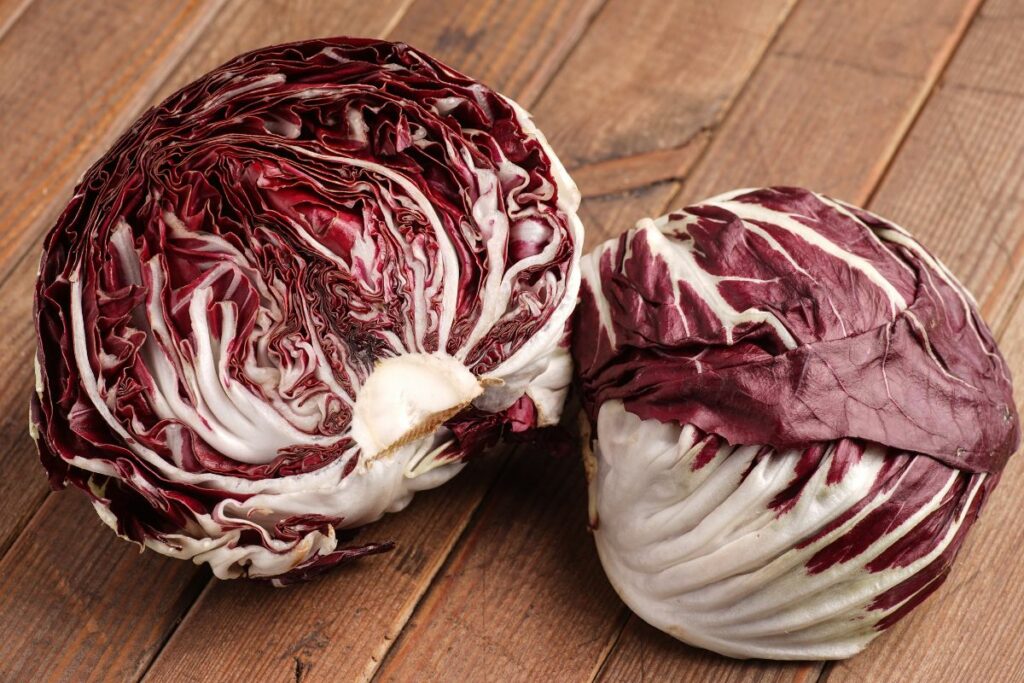
Radicchio belongs to the chicory family, which consists of cabbage-like, leafy vegetables known for their spicy bitterness. The most common variety is called “chioggia”.
Radicchio has a flavor that is sharp, slightly bitter, and spicy. It has dark red to purple leaves, with white veins and a unique texture that makes it more delicate, but delicious on sandwiches.
Much like red leaf lettuce, radicchio's deep red color indicates that it is high in antioxidants and Vitamin K. This leafy vegetable is low in calories, sodium, fat, and cholesterol, making it an excellent addition to any diet.
Radicchio is also high in fiber, antioxidants, B vitamins, vitamins C, E, and K, calcium, zinc, and other vitamins, minerals, and nutrients that are beneficial to overall health. Also known as red chicory, Italian chicory, or red endive, radicchio is popular in Italian and Mediterranean cuisine.
Raw radicchio is a delicious addition to salads, and shaved thinly would make a tasty taco, bruschetta, or pizza topping. Radicchio, whether grilled, roasted, or sautéed, is also a tasty addition to sandwiches. Look for firm, even, hard heads of radicchio with an intense red-purple color.
Endive Lettuce (Frisee)
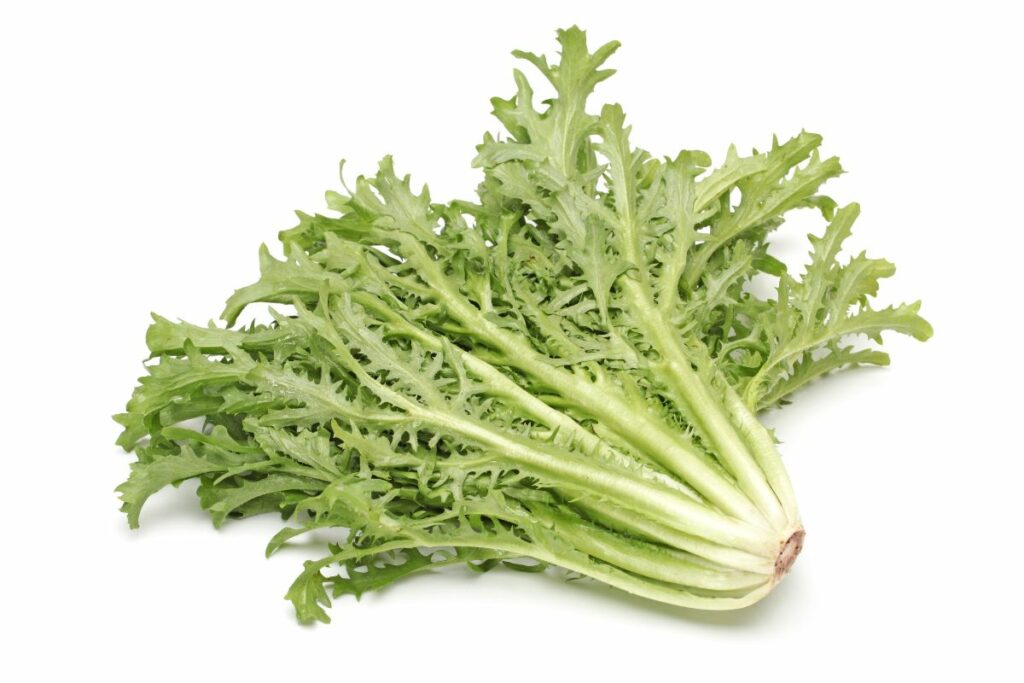
Endive is a lettuce variety with a crunchy texture, a slightly bitter and nutty flavor, and hints of sweetness and tang. Frisee is a common subtype of endive lettuce, but it is more difficult to find. If you do find it in the stores, it has thin, delicate pale green leaves with a distinct texture that makes it ideal for sandwiches requiring a little crunch.
The fine, frizzy leaves of chicory add interesting texture to dishes and have a flavor similar to broader-leaved curly endive. It has a stronger flavor than typical mixed greens, and adds a flavor similar to arugula. Frisee, despite its delicate appearance, holds up well in salads.
Frisee is also low in calories and high in nutrients that aid in weight loss, blood sugar regulation, and the prevention of certain cancers. It contains dietary fiber, folate, vitamins A, C, and K, manganese, iron, and potassium.
When using frisee in sandwiches, choose a lighter-colored variety if you dislike bitterness. The lighter the color of the leaves, the less bitter they are. Secondly, do not attempt to cook frisée to reduce bitterness— instead, balance its bitterness with a creamy dressing on your sandwich.
Mixed Lettuce
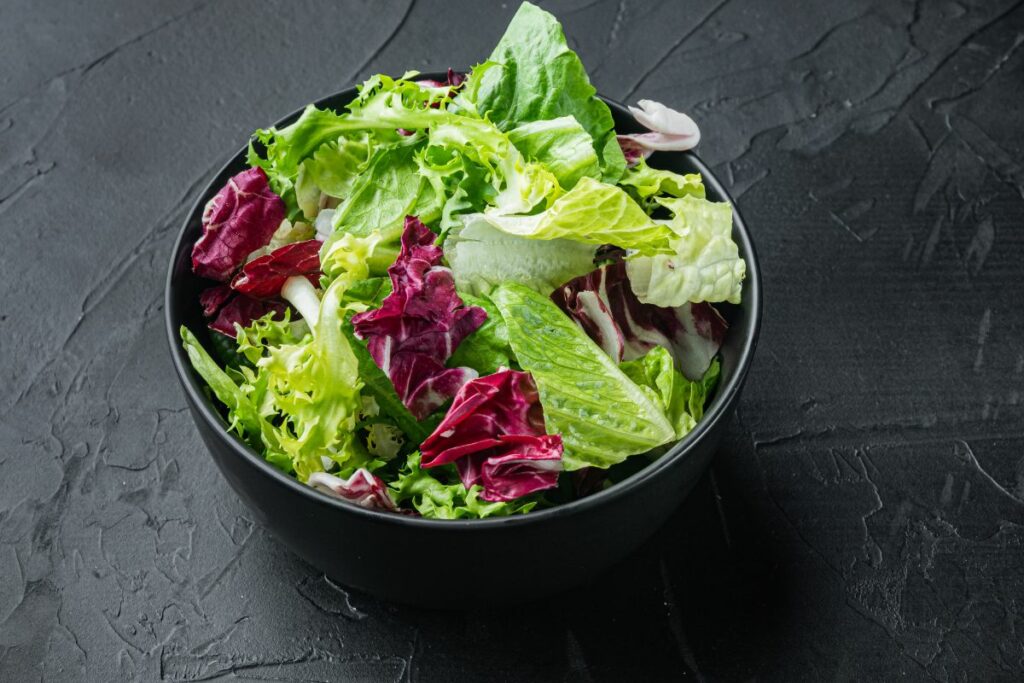
Mixed lettuce is a blend of various lettuce varieties, including baby lettuces, endive, radicchio, romaine, arugula, green leaf, and red leaf. The exact composition of the mix will influence its flavor and nutritional profile.
While we don't usually get to choose what makes up mixed lettuce greens, they’re widely available in grocery stores, making them an easy pick for sandwich lettuce. The flavor and texture of the mix can vary, but expect a blend of bitterness, tang, and sweetness with a crisp texture.
This type of blend is also known as mesclun, field greens, or spring salad mix, and has very few calories but a ton of nutrients. Vitamin A, B6, C, and K, beta-carotene, calcium, folate, fiber, iron, potassium, and phytonutrients are all found in mixed lettuce.
Although bagged salads are convenient, it’s important to note that additional processing steps such as cutting and mixing can increase the likelihood of microorganism contamination. So store them in the fridge right away, follow the "Use By" dates on the package, and clean thoroughly before consuming.
Watercress
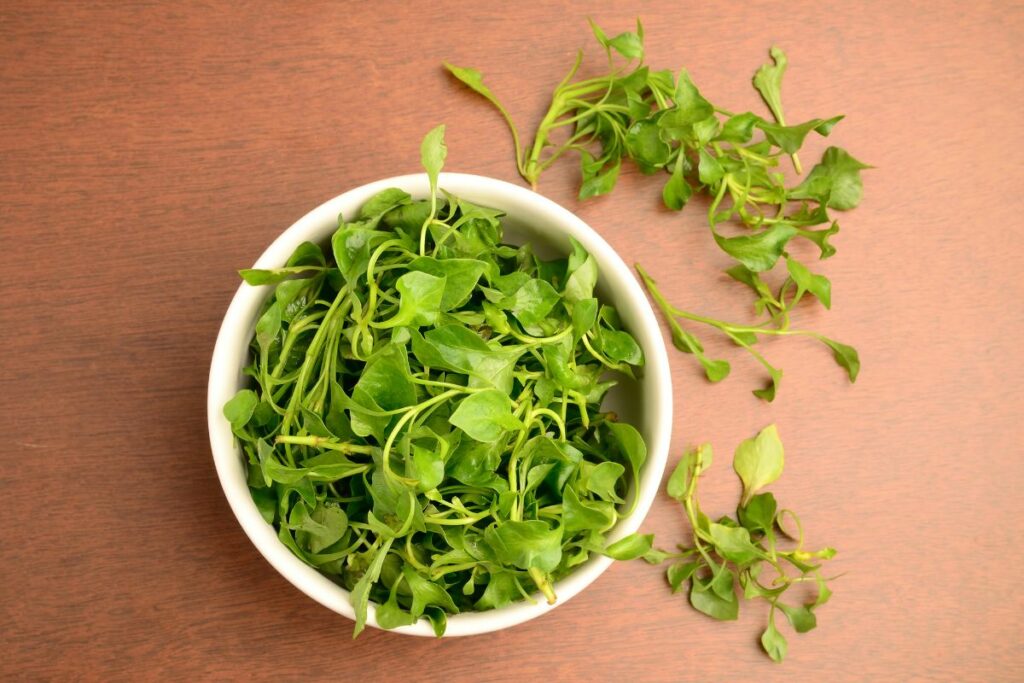
Watercress is more accurately classified as a salad green than as lettuce. This vivid green plant with delicate round leaves grows along running waterways in the wild. It has grown in popularity over the last decade thanks to how well it holds up to breading & deep frying.
Watercress has a similar flavor profile to arugula; it’s fresh with a distinctly peppery, and slightly spicy flavor. The delicate textures and amazing yet refreshing flavors of watercress make it ideal for sandwiches, holding up well to strong flavors like carrots and pesto or smoky meats.
Sandwiches can be made with regular watercress, baby watercress, or upland cress. Use it as a substitute for lettuce or mixed with other greens to include a variety of flavors and nutrition. This green leafy vegetable is also extremely high in vitamins and minerals.
It contains healthy nutrients like vitamin C which boosts immunity, antioxidants that lower the risk of chronic diseases and prevent certain types of cancer, and calcium that protects against osteoporosis. Look for organic watercress from the grocery store or your local farmer’s market.
Celtuce
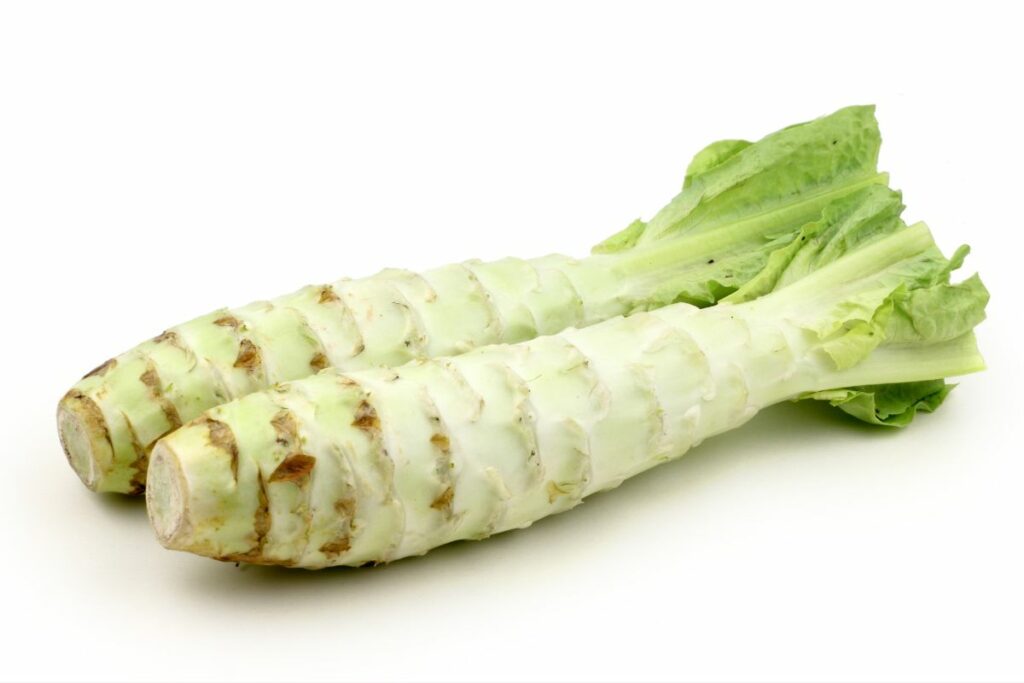
Also called celery lettuce, stem lettuce, Chinese lettuce, Wosun, or asparagus lettuce, ‘celtuce’ is a cultivar of lettuce from China, grown primarily for its long, nutritious leaves. It has a slightly nutty and bitter taste, and a crisp texture typical of leafy greens.
Unlike leafy greens though, it is the stem of celtuce that is mostly used in a variety of dishes. The leaves, unfortunately, almost never make it to the market, as they wilt very quickly.
That sturdy stem, with its whitish-greenish gnarled outer layer, however, can be topped or used as a filling in sandwiches. It can be used in place of cucumbers or radishes in sandwiches, or it can be cooked with a delicious Asian dressing and piled onto a sandwich.
Celtuce retains its crunch through liquid and heat, whether prepared raw or cooked. It’s hardy enough to be pickled, grilled, roasted, or stir-fried, and is great on sandwiches, though it may be harder to find outside of Asia.
Celtuce isn't typically in your neighborhood grocery store. but it can often be found in Asian markets. This leafy green is also nutrient-packed. Celtuce is low in calories but high in vitamins and minerals such as fiber, folate, iron, calcium, magnesium, phosphorus, potassium, vitamins A, C, K, and B vitamins.














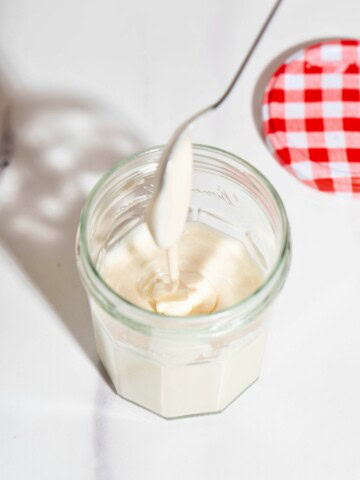

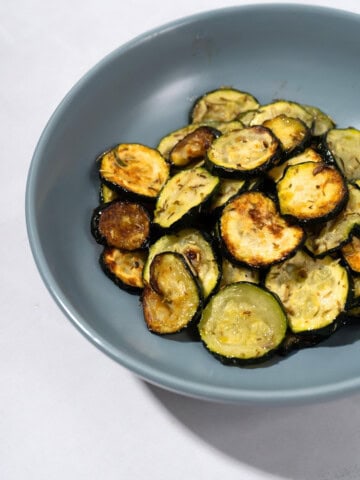
Comments
No Comments